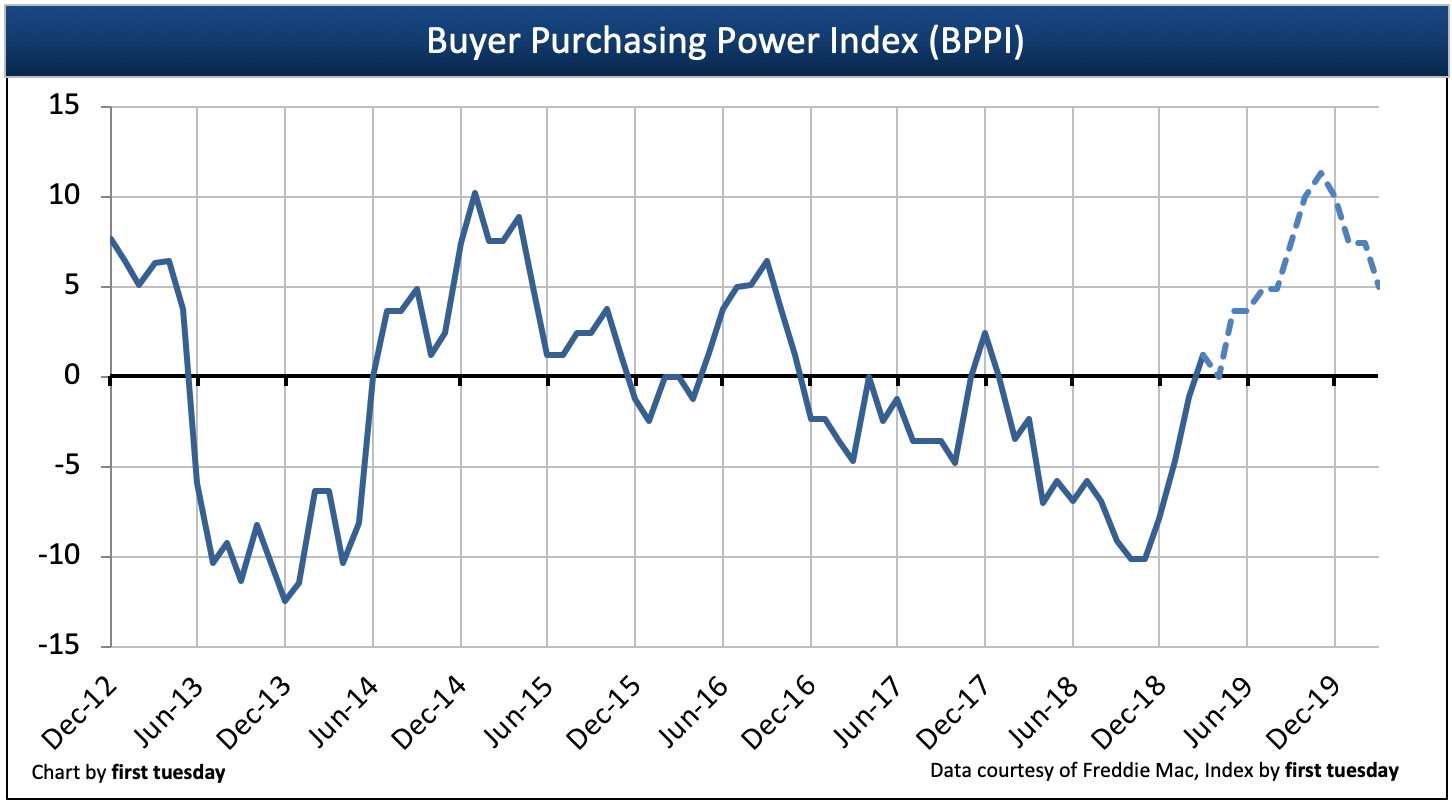The California Buyer Purchasing Power Index (BPPI) figure was +1.2 in March 2019. This positive figure tells us a homebuyer with the same income is able to borrow 1.2% more today than a year ago. The BPPI figure is positive after over 12 months of negative activity as a result of lower year-over-year mortgage rates. FRM rates jumped in January 2018 and increased steadily throughout most of 2018, finally dropping off going into 2019.
The Federal Reserve (the Fed) recently halted their actions to raise short-term rates, which influence FRM rates. When the Fed was still raising rates, FRM rates edged higher through much of the past year. But as the Fed has signaled they are finished raising rates for the foreseeable future, FRM rates have begun to fall.
In the short term, FRM rates will likely continue to decrease in 2019, causing the BPPI figure to rise as homebuyer purchasing power increases. The Fed is reining in interest rate increases going into the next recession, forecasted to arrive in 2020. As we head into the next recession, home sales volume will continue its decline started in 2018, with prices continuing their sympathetic decrease.
The long-term outlook for the BPPI is a decades’ long period of descent as mortgage rates rise with renewed growth in our economy. Sellers can expect downward pressure on home prices in the coming years, as buyers are limited to borrowing less over the coming decades with the same income.

Chart update 04/02/19
| Mar 2019 | Feb 2019 | Mar 2018 | |
| Buyer Purchasing Power Index (BPPI) | +1.2 | -1.2 | -2.4 |
About the BPPI
The Buyer Purchasing Power Index (BPPI) is calculated using the average 30-year fixed rate mortgage (FRM) rate from Freddie Mac (Western region) and the median income in California.
A positive index number means buyers can borrow more money this year than one year earlier.
A negative index figure translates to a reduced amount of mortgage funds available.
An index of zero means there was no year-over-year change in the amount a buyer can borrow with the same income. At a BPPI of zero, homebuyers cannot purchase at higher prices than one year before unless they resort to adjustable rate mortgages (ARMs) to extend their borrowing reach or greater down payment amounts.
As long-term BPPI trend declines, the capacity of buyers to borrow purchase-assist funds is reduced. In turn, buyers needing purchase-assist financing on average can only pay a lesser price for a home. To keep the inventory of homes for sale moving at the same pace, sellers will need to lower prices to accommodate buyer purchasing power or pull their properties off the market.
—
first tuesday journal online is a real estate news source. It provides analyses and forecasts for the California real estate market, and has done so since 1978.















Reign, rain and rein are homonyms, not synonyms. In various real estate publications I have recently seen the three used interchangeably, as “reigning” is used above. While some may consider it unimportant, I find it difficult to rely on information provided by someone with insufficient interest in accuracy to proofread final copy.
Carl,
Thank you for pointing this out — the error has been corrected.
Best,
ft Editorial Staff